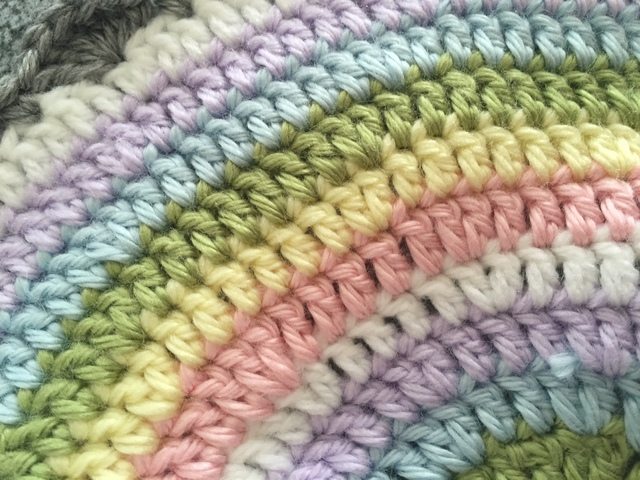Today’s precious crochet mandala for the Mandalas for Marinke project comes to us from Emily Z. in Arkansas who powerfully shares:
“Crochet has been my escape as I’ve dealt with my own depression, as well as dealing with the suicide of my brother, and the attempt of my sister at ending her life. Nobody should feel that they can be replaced!”
She elaborates in her letter:
“I had only a casual knowledge of Wink’s work, but it is all beautiful! I love the colors she chooses throughout her body of work.
I felt compelled to contribute to the Mandalas for Marinke project for several reasons. I am a suicide survivor. My older brother completed suicide in 2011. Suddenly something that only happens to other people happened to my family. Since then, two more of my sisters have been suicidal, with one attempting (unsuccessfully, thank God) this past May. Myself, I’ve struggled with depression for the majority of my adult life. I have learned that you don’t, and shouldn’t, struggle alone, that there are people to help, ears to listen, and help to be found. Needing help is NOT weakness.
Crochet has helped me in my own life, both dealing with my own depression and coping with the loss of my brother. I could see my creations grow, and I was making progress. The rhythmic counting of stitches gave me time to think and put some semblance of order in my chaotic world.
My rainbow themed “standard twelve round mandala” of Wink’s is bordered in silver to help me look for the good in every situation, and the rainbow signifies hope in God’s promises.”
What Emily has described in her family is not a situation unique to her. There have been other instances of multiple siblings in a family completing or attempting suicide. Research shows that sometimes the suicide of one sibling can plant suicidal ideation into the minds of other siblings (making something that seemed impossible before now possible) and combined with the grief of the loss this can lead to additional suicides in the family. And a family history of suicide is a risk factor for suicide. Casey Schwartz, writing on the idea of a suicide gene, notes several famous examples including Wittgenstein who had three brothers that died by suicide; he and his one surviving brother both struggled with suicidal impulses as well. Of course, this doesn’t mean that a sibling’s suicide will lead to more death, but it does remind us that family survivors of suicide must take great care to be aware of what they themselves are going through in the aftermath of the difficulty and must seek out that support system as Emily has described in her letter.
See all Mandalas for Marinke posts here.




